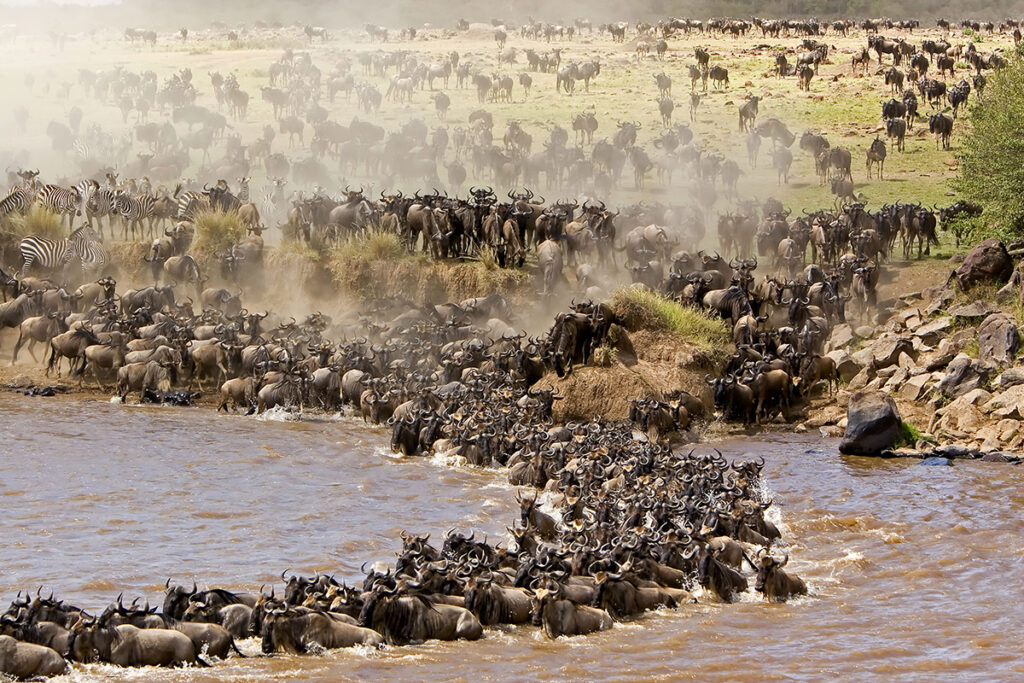
It is incredible, it is magical, it is indescribable and it is an absolute must! It is one of the seven natural wonders of Africa – the movement of over two million wildebeest accompanied by over two hundred thousand zebras, Grant’s and Thompson’s gazelles, elands and impalas, across the plains of the Serengeti, into the Masai Mara and back. This experience is on top of the bucket list of every wildlife photographer and safari enthusiast!
If the drama of the largest number of terrestrial mammals trekking along the plains and crossing the crocodile infested rivers isn’t experience enough, then witnessing the opportunistic carnivores – lions, leopards, cheetahs, hyenas and the jackals hunting the herds is a heart pounding and emotional life-time experience.
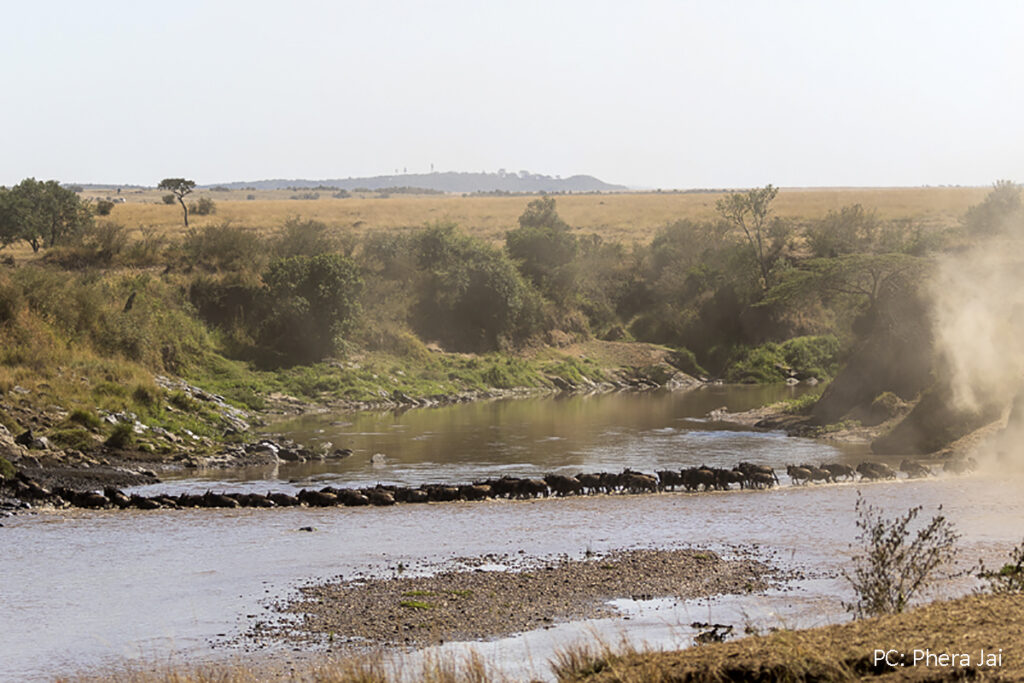
The Great Migration
What is it about the Great Wildebeest Migration that draws visitors from all over the world? Nowhere else on Earth is there such a vast movement of animals trekking between two countries – Tanzania and Kenya, risking death by the many predators lying in wait, crossing the crocodile-infested Grumeti and Mara rivers and dying from exhaustion.
For more than a million years, the animals have followed a cyclical climatic pattern, following the rains in search of greener pastures!
Though many visitors come to Kenya during July/August/September to see the masses of wildebeest crossing the crocodile-infested Mara river, the cycle of the migration in Tanzania is an equally dramatic spectacle. The timing of the animals’ movements are unpredictable. It is a fact that the wildebeest (and their accompanying companions) will cross the Grumeti and Mara rivers, but animals being animals, we don’t know exactly when. As the rains trigger the wildebeest to move onto fresh grazing, the changes in the weather patterns now means we don’t know exactly when the rain will fall!
Ahnasa’s expertise ensures that visitors are in the best possible places to experience one of nature’s most awe-inspiring spectacles.
The Annual Cycle of the Migration
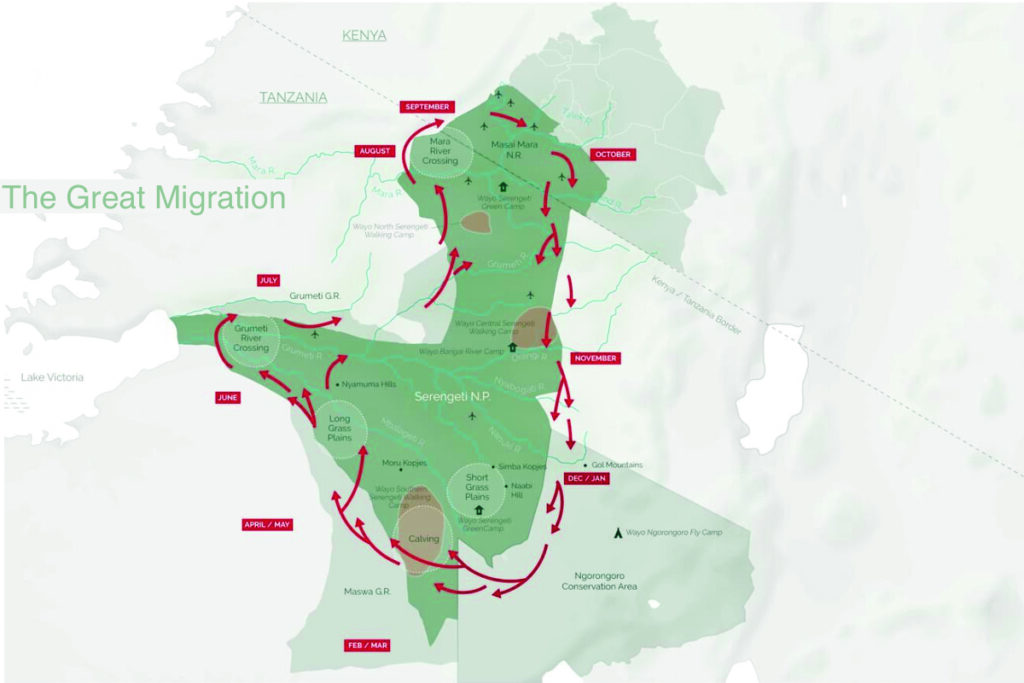
January - February
The calving season and one of the most exhilarating times to visit. The wildebeest gather in southern Serengeti and the adjacent Ngorongoro Conservation Area in impressive numbers where the females give birth. The calving season peaks in February when almost 8,000 calves are born daily and the predators make the most of the easy pickings. The Ndutu area is the best place to be.
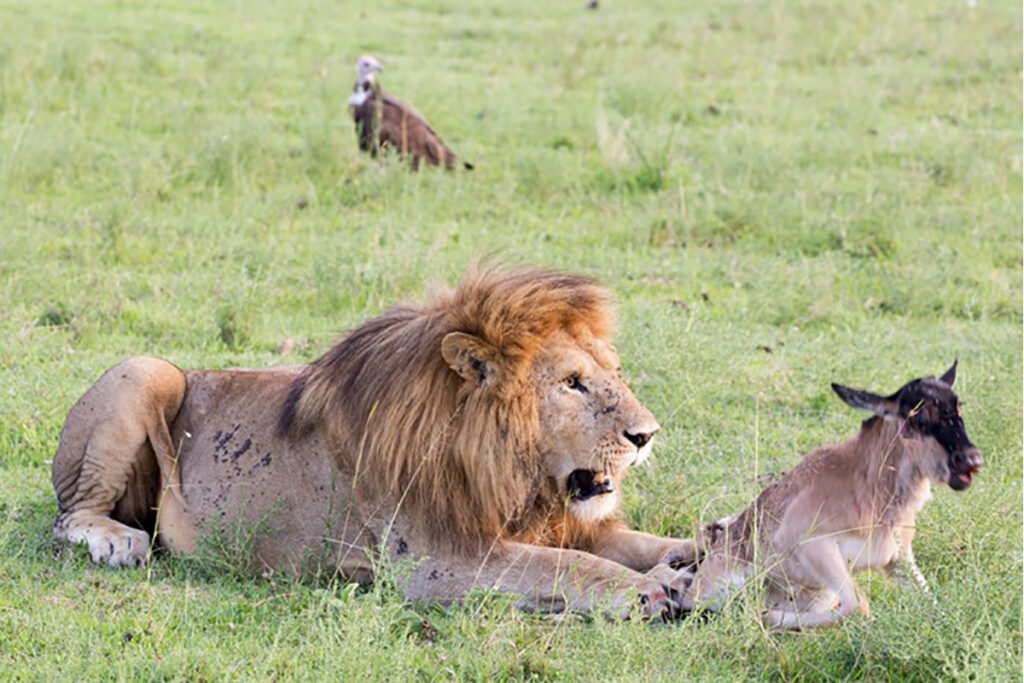
March - April
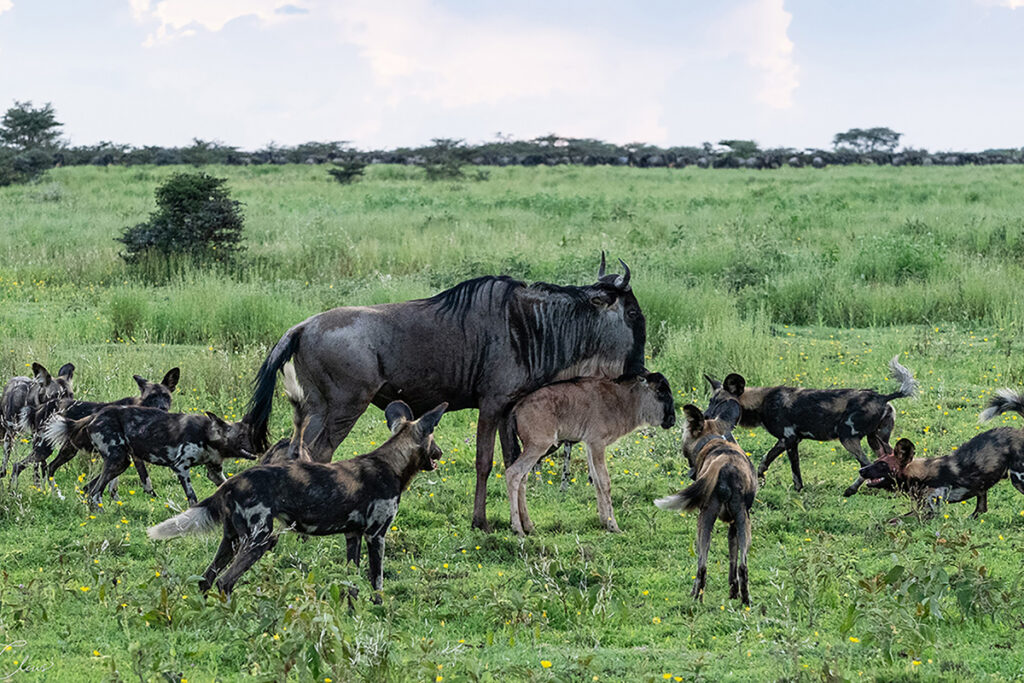
Heavy rains in Tanzania and the wildebeest start heading northwards to Central Serengeti and Seronera area while other herds more towards the Western Serengeti and Grumeti. The rutting (breeding) season is in full swing, with dramatic encounters between testosterone-fuelled males competing for mating rights with receptive females. Though it’s very wet, the best places to be in are Ndutu or Seronera areas.
May - June
The rains dissipate and the herds march on towards the Grumeti river. Long lines of the herds, up to 40 kilometres (25 miles) in length, funnel up into the central Serengeti. The pace quickens now that the calves are stronger. Some of the herds already start the hazardous crossing of the Grumeti river.
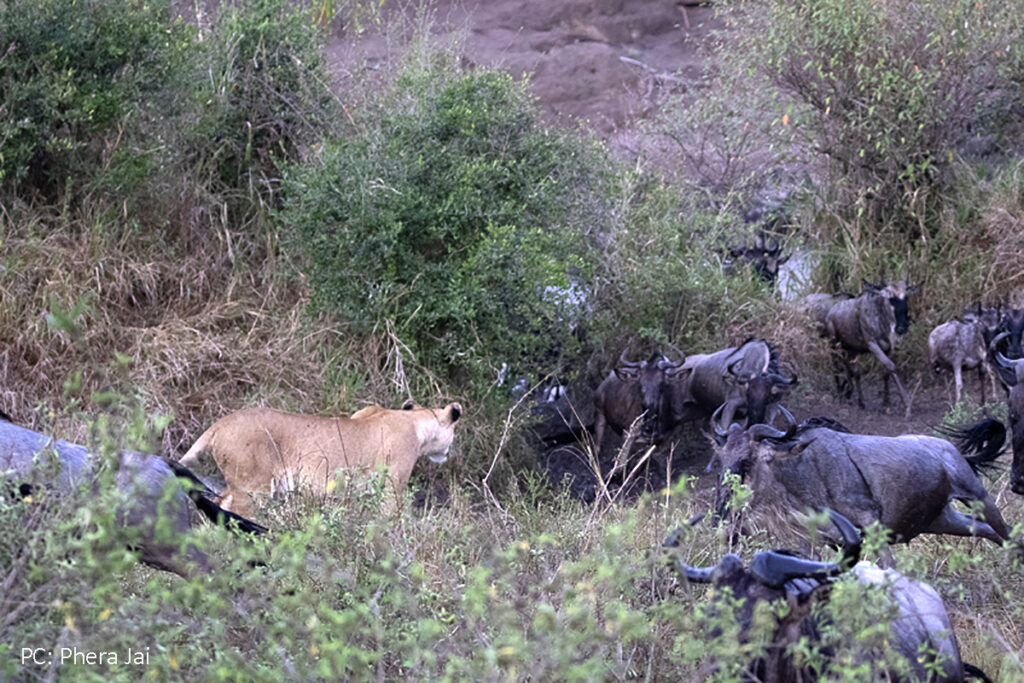
July - August
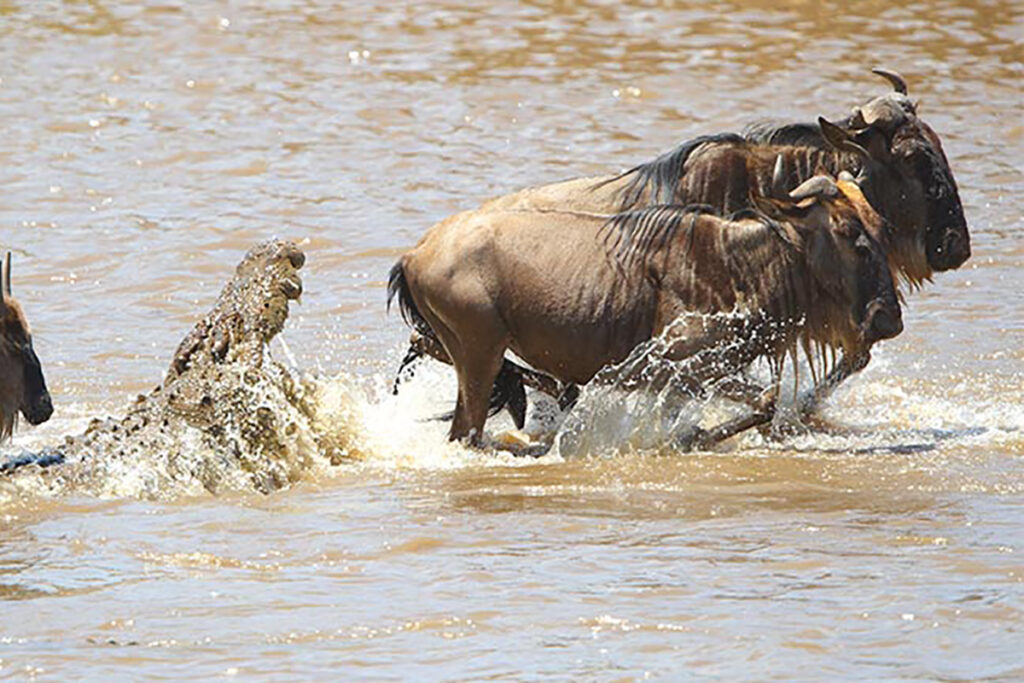
The herds are now reaching the treacherous waters of the Mara River and peering closely at the huge Nile crocodiles who have been patiently waiting the whole year! The urge to graze on the green grasses of the Mara Savannah are strong and thus the incredible spectacle of the mass crossings of the Mara River begin. The Mara truly comes alive! It is an action-packed time!
September - October
The migrating herds settle for a while, though still continuing to cross back and forth across the Mara river.
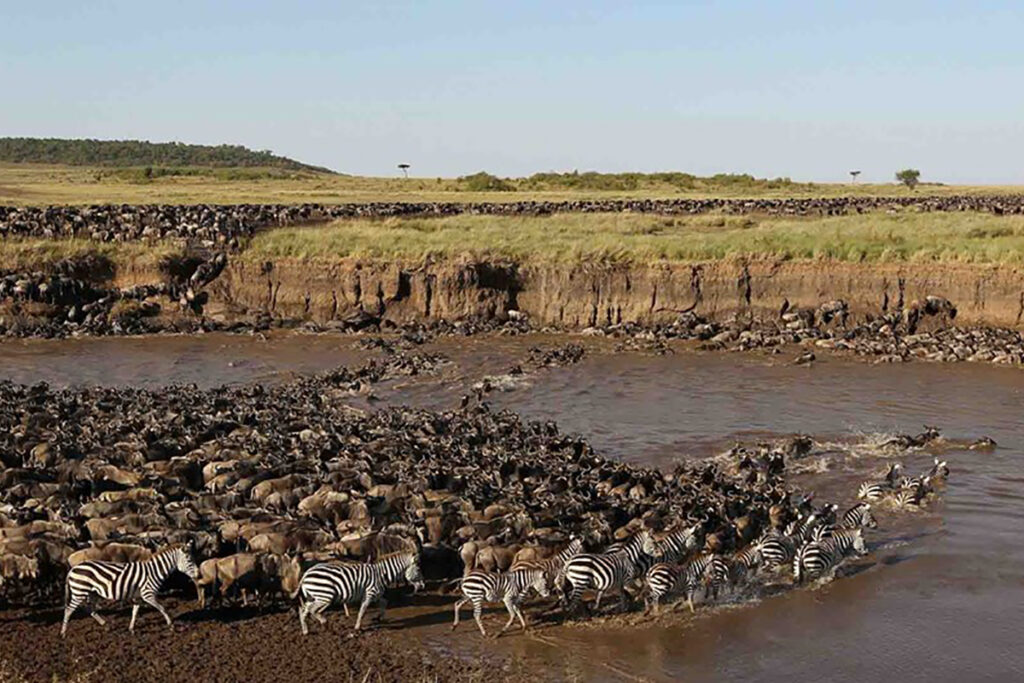
November - December
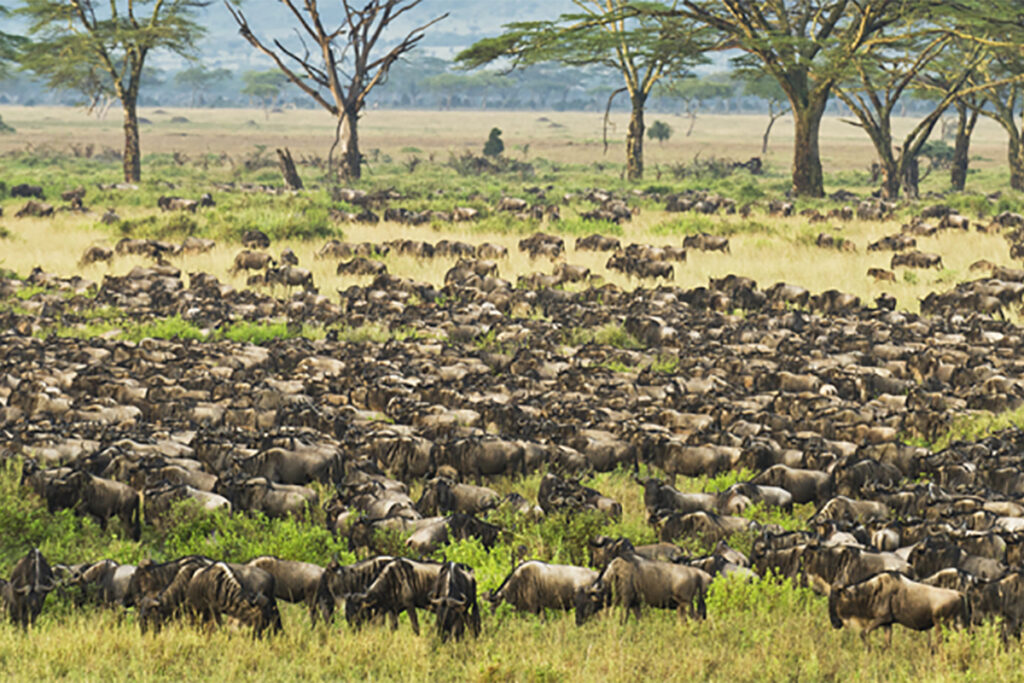
The herds start to trickle south again. By mid to late December most wildebeest have reached the southern Serengeti and northern Ngorongoro Conservation area. The heavily pregnant females graze on the rich grasses in preparation for a new year, new births and the cycle of the Great Migration to start again.
It is impossible to accurately predict river crossings as they depend entirely on the rains and the often unpredictable wildebeest themselves. We recommend booking your Wildebeest Migration safari up to a year in advance to get a lodge/camp on, or as close to the river as possible, cutting down on travel time to crossing points. The wildebeest have historical crossing points and you may spend many hours at the river’s edge waiting for the animals to cross. We also recommend a mobile safari camp that moves with the Migration to ensure you’re in the right place at the right time.
A Birds-Eye View of the Migration
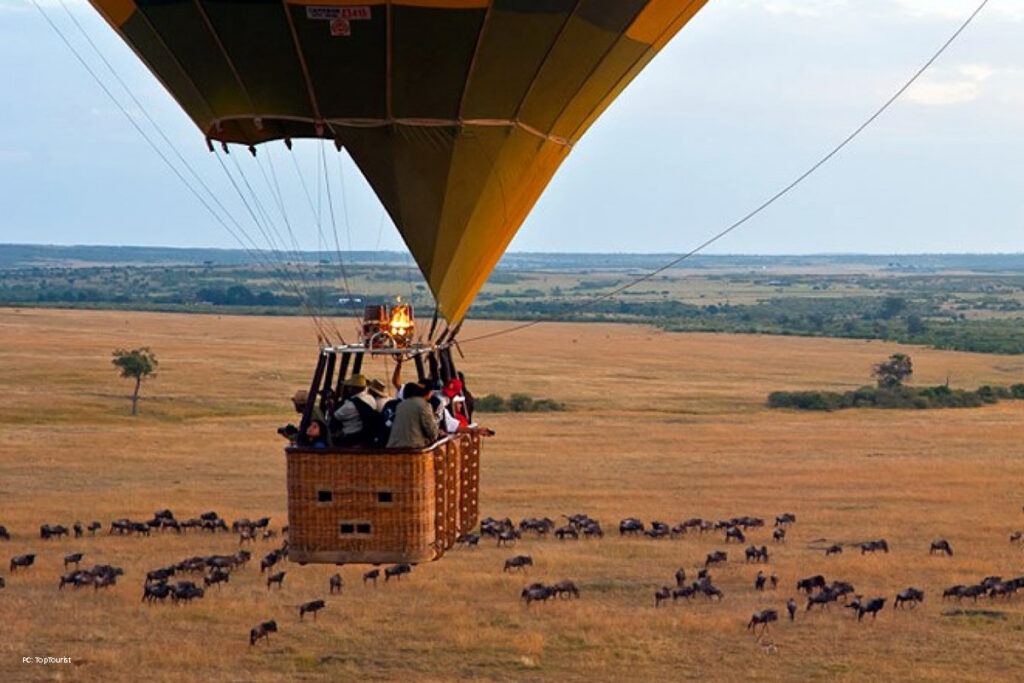
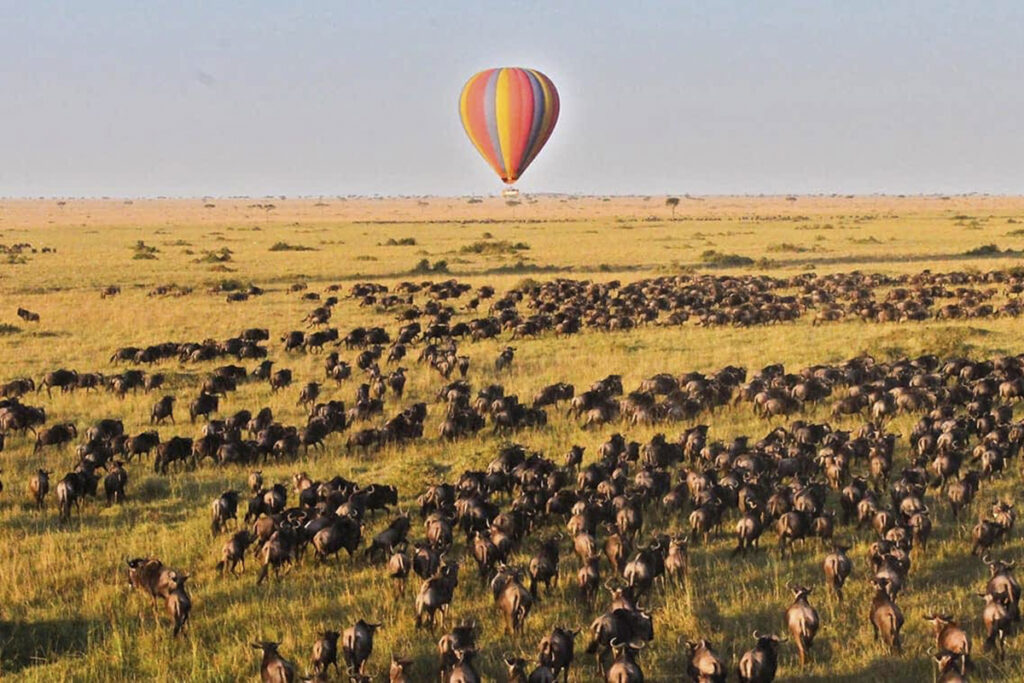
One of the best ways to see the incredible masses of wildebeest is from above
in a Hot Air Balloon.
